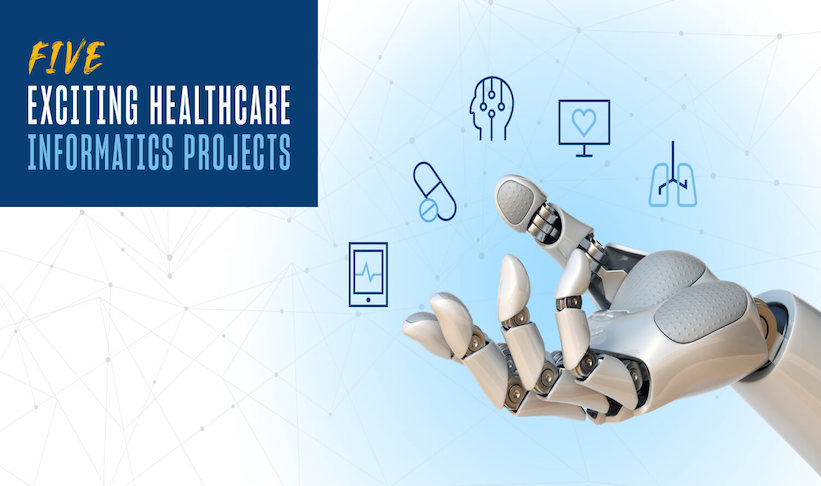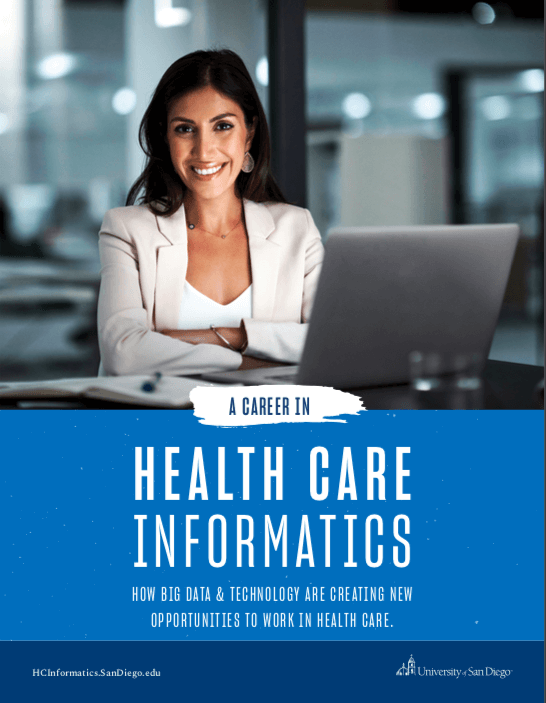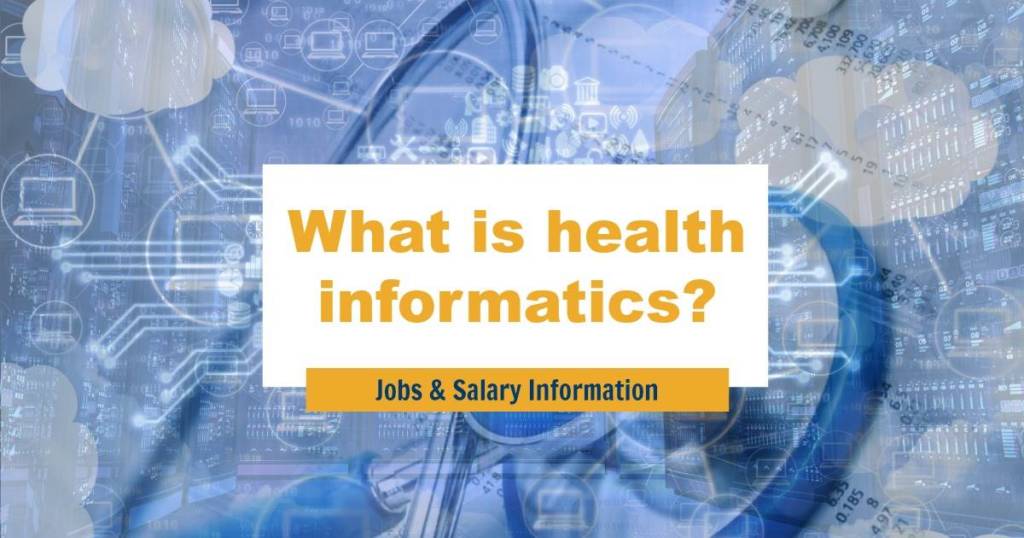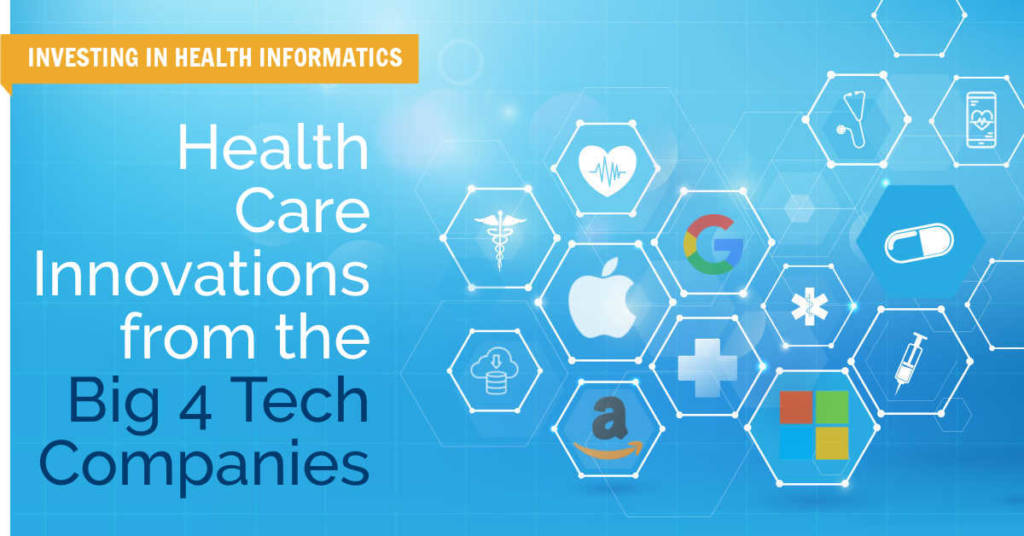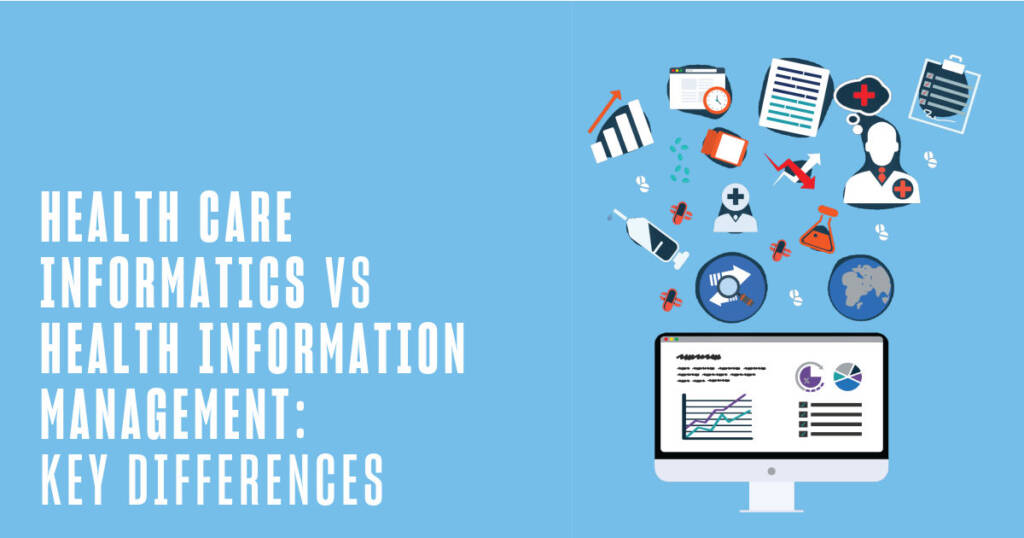Thanks to revolutionary technological advancements, modern medicine is poised for transformation from a “disease industry” to a “scientific wellness industry,” according to a report in healthcareitnews.com. And at the heart of this transition is the field of health care informatics.
Big data is changing everything — and the rapidly expanding use of artificial intelligence and predictive analytics is expected to drive breakthroughs in the health of entire populations and in individual health care that is more personalized than ever before.
“The contrast between 20th and 21st-century medicine is striking,” said Leroy Hood, Chief Science Officer at Providence St. Joseph Health, describing care that is more proactive and “focused on the individual,” and that employs “personalized data clouds to explore the complexities of human beings.”
Hood sees the potential to create “a world virtually free of Alzheimer’s” within 10 years by processing information from such data clouds with computer-aided diagnostics to identify and track risk far earlier, and to design new treatments for specific sub-types of the debilitating disease.
That’s just one example of how health informatics is changing the future of health care right now. From battling the opioid epidemic to breakthroughs in combating sepsis and pediatric asthma, health informatics is the common denominator among countless initiatives with the promise to make the world a healthier place.
Additionally, because the demand for health informatics professionals is expanding so rapidly, this is also a time of opportunity in the employment market for people who possess health care and/or information technology experience.
For a closer look at the fascinating work being done by health care informatics professionals, here are several examples of notable health informatics projects and initiatives.
Combating the Opioid Crisis
With an average of 44 deaths each day from opioid-related overdoses and an estimated 2 million Americans suffering from addiction to prescription painkillers, the opioid epidemic is one of the nation’s most significant public health crises.
Now, providers are looking to health informatics — combining data analytics and population health management strategies — to respond more effectively. Health informaticians are using improved access to data (including prescribing data) to:
- Deepen their understanding of the risk factors for addiction
- Reassess prescribing practices and introduce opioid alternatives where appropriate
- Crack down more effectively on the small percentage of patients who are trying to scam providers into issuing prescriptions
- Utilize new data-driven insights to put in place population health management strategies that help individual patients
Examples include the MO HealthNet initiative in Missouri, which used health informatics data insights to realize a 30 percent statewide drop in the rate of prescriptions for Schedule II opioids.
Another example involves a dashboard tool created by the Rhode Island Quality Institute that makes it easier for primary care providers and opioid treatment centers to more effectively access and share information. Users of the Care Management Dashboard saw their patients’ emergency department return visits within 30 days reduced by 16 percent, an outcome that earned the institute a 2018 Innovator Award from Healthcare Informatics.
[RELATED] How Health Informatics is Shaping Future of Health Information Management >>
Fighting Pediatric Asthma
Another Innovator Awards semifinalist is using informatics data to reduce emergency room visits for pediatric asthma-related issues by 18 percent and cut about $1 million in avoided emergency room costs.
As part of its strategic plan for population health management of pediatric patients, Children’s Hospital of Orange County (Calif.) developed a system of asthma patient measures designed to better manage the condition and keep individual patients out of emergency situations. The measures are built into each patient’s electronic health record and the data is available to providers in real time as part of the clinical workflow.
The number of children with an asthma action plan grew quickly, fueling the reduction in emergency room encounters and earning them a Healthcare Informatics Innovator Award.
Life-Saving Technology
One man’s path into the field of health informatics led directly to a project that is credited with speeding up medical science’s ability to detect signs of sepsis — a life-threatening condition that kills an estimated quarter million patients annually and is caused by the body’s extreme response to an infection.
Andrew Harrison was a student in the Mayo Clinic’s Medical Scientist Training Program when he attended a lecture about “data sniffers,” computer applications that sift through a patient’s electronic health record and alert care providers to early signs of dangerous syndromes.
“I knew nothing of clinical informatics,” Harrison said in a story in Discovery’s Edge (the research magazine of the Mayo Clinic). But he was intrigued that computers could be taught to conduct medical surveillance and that data analysis could improve clinical decision-making.
Working alongside the researcher whose talk initially inspired his passion for informaticsHarrison focused his doctoral studies on developing a first-generation “sepsis sniffer” application. He continued to improve the sniffer, and in a clinical study it was able to identify patients with sepsis sooner than bedside clinicians.
Harrison is “a prototype for medical students trained to heal both patients and the health care system,” according to the Mayo Clinic story chronicling his work. “Instead of searching for breakthroughs under a microscope, he discovered statistical enlightenment — the kind that becomes a best practice and improves care around the world.”
[RELATED] 8 Technologies that are Changing Healthcare >>
Real Improvements Through Artificial Intelligence (AI)
Despite some healthy skepticism from critics, artificial intelligence is already ubiquitous throughout the health care industry.
In fact, according to a healthitanalytics.com report titled “Top 12 Ways Artificial Intelligence Will Impact Healthcare,” as more and more data becomes available — including through billing and payment systems that capture incredible amounts of valuable information about patients and their conditions — “artificial intelligence is poised to be the engine that drives improvements across the care continuum.”
Providers are already using AI algorithms to gain “unprecedented insights into diagnostics, care processes, treatment variability and patient outcomes,” according to the report, which explains how the medical community is using artificial intelligence to capitalize upon the “nearly endless opportunities to leverage technology to deploy more precise, efficient and impactful interventions at exactly the right moment in a patient’s care.”
Strategies for harnessing artificial intelligence to improve health care include:
- Expanding access to care in underserved or developing regions — In areas where there is a deficit of trained medical personnel, AI can be used to perform diagnostic duties typically handled by humans.
- Transforming smartphone selfies into powerful diagnostic tools — Experts believe that images taken from smartphones and other devices will increasingly become an important tool for medical imaging, particularly in underserved areas.
- Using AI algorithms to enhance the ability of “smart devices” now widely used in health care to identify deterioration in a patient’s condition or detect the development of complications.
- Developing the next generation of non-invasive radiology tools for diagnostic processes that still rely on tissue samples obtained through biopsy.
- Assisting providers with decision making at bedside — According to healthitanalytics.com, AI offers tremendous potential for “powering predictive analytics and clinical decision support tools that clue providers in to problems long before they might otherwise recognize the need to act.”
Putting the ‘Me’ in Personalized Medicine
In addition to equipping doctors and nurses with powerful tools designed to improve patient health and the delivery of care, health informatics is also opening up incredible new possibilities for patients to become more actively engaged in their own care.
For example, tech giant Apple has developed a personalized Health Records system that promises to reshape patient engagement, according to Dr. Shez Partovi, chief digital officer and senior vice president of digital transformation at Dignity Health, a longtime collaborator with Apple and an early adopter of its Health Records program. Since its launch in January 2018, more than 100 hospitals and clinics have signed on to the initiative.
Apple has developed health care applications for its iPhones and tablets that enable both providers and patients to instantly access a patient’s entire medical record. Working in conjunction with the traditional patient portals used by many health organizations, the Apple system securely transfers a patient’s medical data to the Health Records app so the patient, as well as providers, can view in it instantly in a familiar, easy-to-use interface. High-resolution display and powerful graphics capabilities even give doctors the ability to view a patient’s imaging studies on an iPad.
But in addition to enabling care providers to work more efficiently on a patient’s behalf, one of the most exciting aspects of the program is that it enables patients to better manage their own care and even connect remotely with providers between visits.
According to Apple, the program enables patients to “aggregate their health records from multiple institutions alongside their patient-generated data, creating a more holistic view of their health.”
Dr. Partovi at Dignity Health said the Apple initiative involves “empowering patients by giving them their data.” In addition to ownership of their medical data, patients will benefit from apps (both currently existing and those to be developed in the future) that help them make better, healthier use of their data — for example, an app that helps diabetes sufferers treat their condition by using food as medicine.
The goal of all of this, says Apple, is “care that becomes more efficient, more personalized, and ultimately more human.”
Learning More About Health Care Informatics
Despite showing great promise to make the world a healthier place, the field of health care informatics continues to face a talent shortage, with strong demand and high pay for employees who possess medical/clinical experience as well as proficiency in data analysis, information technology or informatics.
For that reason, many current and future health informatics professionals are taking advantage of specialized master’s degree programs that build on their work experience and knowledge of the health care field while refining their programmatic, technical and analytical skills.
One of the most exciting aspects of health informatics is the future breakthroughs that “we cannot even imagine yet,” said Dr. Jonathan Mack, program director for health care informatics and nursing informatics at University of San Diego. In Q&A about career growth in the field of health informatics, Dr. Mack speaks about the state of this fast-growing discipline and the significant opportunities for motivated individuals to pursue a meaningful career in health informatics.
